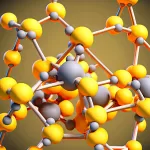
The small but influential gland of the reproductive system of men is called the prostate. Its location is between the rectum and the bladder where it performs several important functions. Men often hear about it for the first time after their 40th when the physician prescribes the examination. The latter can be frightening and cause a lot of questions.
Therefore, let’s discover more about it today. The earlier you pay attention to it, the healthier it will stay no matter how old you are.
What is Male Prostate
First of all, let’s find out the male prostate’s location and what it looks like. It is important to further understand its functions and the role in the body of a man. In addition, with this information, you will better comprehend the key features of its examinations.
Location
This gland has a chestnut size and a weight of nearly 30 grams. It can be examined rectally due to its location, namely:
- It is placed below the bladder.
- Under it, the pelvic floor muscles are located.
- Behind the prostate is the ectum.
- Its ducts are connected with the urethra, as the latter passes through the gland.
That is quite simple and leaves no doubts on how the doctor can so easily find and evaluate the gland in a few minutes.
Three distinct zones
The gland’s tissue consists of three zones:
- The transition zone is inside and takes nearly 10% of all the tissue. It is near the upper part of the urethra and the bladder.
- The central zone wraps up the previous one and here are the ducts for ejaculatory fluids.
- About 70% are called the peripheral zone. Here the muscles are located.
When diseases occur, they involve different parts of the gland and this is also used for the proper diagnostics.
Functions of the Prostate
What does this small part of the reproductive system do? There are two main functions and both are related to ejaculation.
Production of seminal fluid
The gland produces an important part of the semen. It provides enzymes and nutrients for nourishing sperm cells and lubricating the urethra. Thus, fertility depends on the quality of this liquid.
Ejaculation control
The gland’s muscles are helping to push semen through the urethra when orgasm comes. In addition, they prevent semen from going up to the bladder.
While urination occurs, the central zone closes the ducts so urine is not entering the gland.
Where is the male prostate located
According to all the information given above, this small gland can be easily found in front of the rectum and below the bladder. It is possible to feel it through the rectum walls and that is how the easiest examination can be done.
In addition, it can be surgically removed from this area in case of a disease. Further on, a man can leave a normal life after the recovery period.
Prostate Health and Common Issues
When this gland is of a proper size, it causes no problems and men do not pay it much attention. However, if it becomes larger, both problems with ejaculation and urination follow. This may happen due to the following diseases.
Prostatitis
This is the inflammation of the tissue mainly caused by bacteria. The disease can be acute or chronic and is accompanied by difficulties with both urination and ejaculation. Pain is also a common symptom.
Different groups of antibiotics are prescribed to cure this disease and it is possible to get rid of it completely. However, for the chronic case, the treatment lasts for half a year and more. That is the reason to visit the doctor in case of even the slightest disturbing symptoms such as pain while urinating or ejaculating, frequent urge to pee, pain in the lower stomach, and changes in the quality and quantity of semen liquid.
Benign Prostatic Hyperplasia (BPH)
During the aging process, the tissue of the transition zone often undergoes growth. This is not related to cancer cells appearance but, still, the gland can reach the size of a lemon. The additional pressure on the bladder and the urethra causes problems with urination. This is common for older men. However, it is not cancer and can be easily cured in a surgical way.
Prostate Cancer
Tumors often appear in the peripheral zone and this is a very widespread cancer type among men all over the world. However, different kinds of surgical treatment help to solve this problem. As a man can leave a normal life without a prostate, this disease can be cured.
As for the symptoms, they are very similar to the previous diseases. That is why the more detailed examination is required here. It starts with a biopsy and then the physician may prescribe additional tests to prove the diagnosis.
Maintaining Prostate Health
According to numerous scientific investigations, two major factors influence the condition of this gland. The first one is age. Thus, a majority of men above 45 years old face some kinds of problems here. The second factor is family history. For instance, if there was a case of prostate cancer for the closest relatives, then the chances skyrocket.
However, it is advisable not to neglect a healthy lifestyle as it also greatly contributes to the condition of the gland.
Regular check-ups
Usually, physicians recommend annual prostate examinations for all men above 45. No matter how old you are, you can always ask your doctor to do the following:
- Digital rectal exam. A doctor checks the condition of the gland via the rectum with his gloved finger. It is a bit unpleasant but a very brief and informative examination.
- Blood test. The gland produces a unique protein-specific antigen in small quantities. When there are some troubles, its concentration rises abruptly so it is measured for diagnostics. This test is done in the lab and the results are usually ready the following day.
- Biopsy. This procedure is prescribed when there is a probability of cancer. The tiny needle is utilized to take a small sample of the tissue and analyze it.
Furthermore, the doctor can prescribe other more detailed tests if needed. However, as a part of routine check-ups, you will only need the first two examinations.
Both are fast and only a bit uncomfortable. It is much easier to check the condition regularly than to cure the chronic disease.
Diet and exercise
There is evidence that those who prefer a healthy diet and exercise regularly have fewer prostate issues. The general recommendations include eating more fruits and vegetables, nuts and groat while eliminating sweet and fatty foods.
As for workouts, one may select those that are suitable. The main thing is regularity not the difficulty of the training.
Tobacco and alcohol consumption
Tobacco products definitely contribute to cancer risk and this type of tumor also. The same is established for alcoholic drinks. Therefore, if you wish to remain healthy and live a full life, better to quit bad habits and not overuse such substances.
Stress management
Last but not least is stress. Difficulties at work and in personal life often cause different diseases. Therefore, to stay active and energetic, one can add relaxation practices, meditation or regular visits to a psychotherapist in daily life. This will prevent many health problems, including those related to the prostate.
Summary
Altogether, now you have all the important basic information on the topic. Thus, you are aware of the gland’s location, unique features and important functions as well as of the examination and common diseases that may occur.
It is recommended to pay attention to the condition of this small gland especially while becoming older than 45 years old or in the case of a family history, that includes cancer cases. Regular examination and a healthy lifestyle greatly contribute to its prolonged normal functioning. Therefore, do not neglect them and take care of your body in advance.
FAQ
How do I know if I found his prostate?
The prostate is nearly two inches inside the rectum. It gives a soft or rubbery feeling when touched with a finger. If you found a prostate, a man can feel an abrupt urge to pee. For some, the stimulation of this area gives sexual satisfaction.
What does the prostate do for a man?
It produces a special liquid for nourishing sperm and guaranteeing its fertility. The muscles of it are used during ejaculation to push the semen outside.
How far up is your prostate located?
It depends on the man, but on average, it is two inches inside the rectum. Thus, it can be easily examined this way. Doctors usually do this examination as a part of routine check-ups for all patients who are more than 45 years old.
How big is the male prostate?
The normal gland is like a chestnut and weighs approximately 30 g. When there are some problems, it may reach the size of a lemon that causes different unpleasant symptoms. Therefore, its normal size is crucial for every man.







